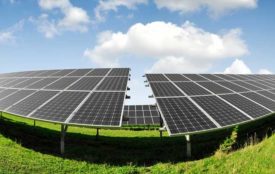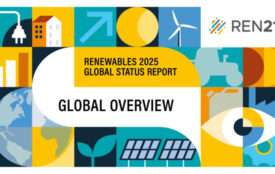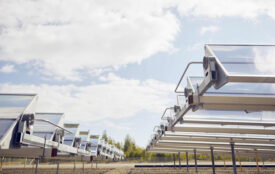Middle East and North Africa – great potential for hydrogen and synthetic fuels from renewable energy sources
The Middle East and North Africa have great potential for producing hydrogen and synthetic fuels from renewable resources. Synthetic fuels play an important role in reducing carbon dioxide emissions in the mobility sector and achieving ambitious climate protection goals.
In a study, the German Aerospace Center (Deutsches Zentrum für Luft- und Raumfahrt; DLR), the Wuppertal Instituteand the Institute for Future Energy and Material Flow Systems (IZES) have investigated the role that the Middle East and North Africa (MENA) could play in supplying Germany and Europe with hydrogen and synthetic fuels from renewable resources. The results show that the MENA region has enormous potential for the cost-effective production of these fuels. The production costs (primary costs) are not only dependent on the availability of renewable resources, but also carry significant investment risks, and thus they depend on various conditions in possible export countries. Synthetic fuels play an important role in reducing carbon dioxide emissions in the mobility sector and in the achievement of ambitious climate protection goals. Electricity and hydrogen from renewable sources and carbon from the air are used to produce these types of fuels.
High-resolution regional data on technical potential, production costs and investment environment combined for the first time
During the study, the entire MENA region was examined in high resolution, something that had not been done before. For this purpose, the researchers divided the region into many small areas and analysed them individually. Another first in this study is that the authors modelled the entire production chain for synthetic fuels and integrated it into their calculations, thereby also taking into account energy and hydrogen storage facilities. These are necessary in order to operate the entire system with renewable, and therefore fluctuating, resources in a stable and economically optimal way and thus it is sensible to include them. In contrast to other studies, MENA-Fuels combines technological and economic aspects while evaluating the individual risks for all 17 countries considered in this region. This includes analyses of the resources, the political conditions as well as the framework conditions for investments. “This is the first time that we have had a comprehensive analysis, which acts as a basis for further research, but also as a source of information and a base for decision-makers in industry and politics,” says Jürgen Kern, project manager for the study at the DLR Institute of Networked Energy Systems.
Technical feasibility analysis – fuel production could exceed Germany’s demand many times over
The MENA region has a very high potential for generating renewable energy – a total of more than 400,000 terawatt hours per year. This potential is driven by the favourable conditions for the use of solar energy in the form of photovoltaics and concentrated solar power (CSP). The potential for producing hydrogen and synthetic fuels is also correspondingly high. This remains valid even if one deducts the MENA countries’ own long-term demand for the complete transition to renewable energy. Depending on the assumed development scenario – negative, conservative, positive – the export potential could therefore exceed Germany’s demand for synthetic fuels by a factor of 60 to 1200.
Cost analysis – significant potential for synthetic fuels for less than two euros per litre in production
Nearly all MENA countries have significant potential to produce synthetic fuels at low cost. In the most favourable locations, production costs could be between 1.92 and 2.65 euros per litre in 2030, and between 1.22 and 1.65 euros per litre in 2050. For these figures, the researchers assumed investment costs in the medium range and a positive development of investment conditions. The export potential of synthetic fuels that could be produced for less than two euros per litre is predicted as approximately 28,000 terawatt hours in 2050, even with negative investment conditions. In this case, synthetic fuels would primarily come from countries with favourable technical potential and stable conditions. If the investment conditions were to develop in a positive way, the export potential could even amount to more than 50 000 terawatt hours per year.
Investment environment determines potential export regions
When assessing export potential, however, production costs are not the only decisive factor. The investment environment is also important. When taking into account possible investment risks, this has a significant influence on the total costs and thus the possible selection of export countries.
Another prerequisite for the export of synthetic fuels in each scenario is the comprehensive expansion of renewable energies in the MENA region itself. The scenarios for the generation capacities for solar and wind power to meet the region’s own fully renewable supply by 2050 range between 4500 and 9000 gigawatts. Currently, these scales and the necessary dynamics are not yet reflected in the expansion targets of most MENA countries. In addition to the development of production capacities for synthetic fuels on an industrial scale, the expansion of renewable energies would also have to be significantly intensified. Ideally, therefore, domestic supply and export will complement and reinforce each other.








